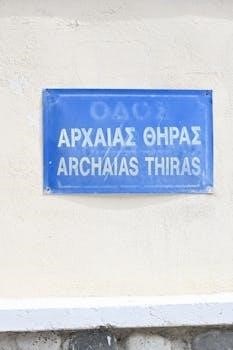Clash of Civilizations⁚ An Overview
Samuel Huntington’s “Clash of Civilizations” is a theory asserting that cultural and religious identities will be the primary source of conflict in the post-Cold War world. He argued that these differences would lead to clashes and shape global politics.
Huntington first presented his thesis in a 1993 Foreign Affairs article titled “The Clash of Civilizations?” This was expanded into a book‚ “The Clash of Civilizations and the Remaking of World Order‚” published in 1996. It came after the end of the Cold War.
Samuel P. Huntington’s “Clash of Civilizations” is a highly influential yet controversial thesis positing that cultural and religious identities would be the primary source of conflict in the post-Cold War world. Published initially as a 1993 Foreign Affairs article‚ it was later expanded into a 1996 book‚ “The Clash of Civilizations and the Remaking of World Order.”
Huntington argued that with the end of the Cold War‚ ideological conflicts would give way to clashes between major civilizations. He identified several key civilizations‚ including Western‚ Confucian‚ Japanese‚ Islamic‚ Hindu‚ Slavic-Orthodox‚ Latin American‚ and possibly African.
The central premise is that these civilizations have distinct values‚ histories‚ and worldviews that are fundamentally different and often incompatible. These differences‚ combined with increased interaction due to globalization‚ would inevitably lead to misunderstandings‚ tensions‚ and ultimately‚ conflict.
Huntington’s thesis challenged prevailing views that emphasized globalization and the spread of Western values. He presented a more pessimistic outlook‚ suggesting that the world was entering a new era of civilizational conflict.
Publication History and Context
Samuel P. Huntington’s “The Clash of Civilizations?” first appeared as an article in the Summer 1993 issue of Foreign Affairs. This publication served as an initial introduction of his ideas to a broader audience‚ sparking immediate debate and discussion among academics‚ policymakers‚ and the public.
Responding to the intellectual climate after the Cold War‚ where Francis Fukuyama had proposed the “end of history” with the triumph of liberal democracy‚ Huntington presented an alternative vision. He argued that the world was not converging towards a single model but rather fragmenting along cultural lines.
The article’s popularity and the ensuing debates led Huntington to expand his thesis into a full-length book‚ “The Clash of Civilizations and the Remaking of World Order‚” published in 1996. The book provided a more detailed analysis of the major civilizations‚ the reasons for their potential clashes‚ and the implications for global politics.
The context of the early 1990s‚ marked by the collapse of the Soviet Union and the rise of new geopolitical challenges‚ shaped Huntington’s analysis. He sought to provide a framework for understanding the emerging world order.

Core Concepts of the Clash of Civilizations
Huntington posits that in the post-Cold War era‚ cultural and civilizational identity would become the primary source of conflict. This replaces ideological and economic clashes as the dominant feature of global politics.
Civilizational Identity as a Primary Source of Conflict
Huntington argues that civilization identity is increasingly important in shaping global interactions. The world will be primarily influenced by interactions among major civilizations. He believed the clashes of civilizations will be a threat to world peace. Civilization identity is a cultural entity. Villages‚ regions‚ ethnic groups‚ nationalities‚ religious groups‚ all have distinct cultures at differing levels of cultural heterogeneity. Huntington argued that the increasing interactions among civilizations intensify civilization consciousness. This heightens awareness of differences between civilizations and commonalities within them.
Cultural commonality increases as economic regionalism grows. Successful economic regionalism will reinforce civilization consciousness. Cultural characteristics and differences are less mutable and hence less easily compromised and resolved than political and economic ones. Religion differentiates civilizations from each other; it is a key factor in defining civilization. Differences in culture and religion create distinctions that have generated conflict. The clash of civilizations will dominate global politics. The fault lines between civilizations will be the battle lines of the future.
Major Civilizations Identified by Huntington
Huntington identifies several major civilizations that shape global politics. These include Western‚ Confucian‚ Japanese‚ Islamic‚ Hindu‚ Slavic-Orthodox‚ Latin American‚ and possibly African civilization. The West is characterized by its classical heritage‚ Christianity‚ and separation of church and state. Confucian civilization encompasses China‚ Korea‚ Singapore‚ and Vietnam‚ sharing cultural commonalities. Japanese civilization is unique due to its distinct cultural identity and homogeneity. Islamic civilization spans from North Africa to Southeast Asia‚ united by Islam but diverse in culture. Hindu civilization is primarily located in India.
Slavic-Orthodox civilization centers around Russia and Eastern Europe‚ characterized by Orthodox Christianity and shared history. Latin American civilization blends Iberian and indigenous cultures‚ with a Catholic religious background. African civilization is potentially a civilization. Huntington acknowledges the debate surrounding its existence and cohesiveness. These civilizations interact and sometimes clash. Their interactions shape the dynamics of global politics according to Huntington’s thesis.
Why Civilizations Clash⁚ Key Drivers
Huntington outlines several reasons why civilizations clash. Differences among civilizations are real and fundamental‚ rooted in history‚ language‚ culture‚ and religion. These differences are less mutable than political or economic ones. The world is becoming smaller due to increased interaction‚ intensifying civilization consciousness and awareness of differences. Economic modernization and social change are separating people from local identities. The role of the West is declining‚ leading to a reaction by other civilizations asserting their own values.
Cultural characteristics are less easily compromised and resolved. Economic regionalism is increasing civilization consciousness. Disputes can escalate into broader conflicts involving core states of civilizations. These core states rally support from culturally similar states. Civilizations represent the broadest level of cultural identity with which people identify. These factors combine to make clashes between civilizations more likely and more violent. Huntington posits that these conflicts are the next phase of world history.

Criticisms and Controversies Surrounding the Thesis
Critics challenge the inevitability of civilizational conflict. They argue that Huntington’s thesis oversimplifies complex global interactions. It neglects cooperation and shared values across civilizations. Furthermore‚ it overlooks internal divisions within civilizations.
Arguments Against the Inevitability of Civilizational Conflict
Arguments against the inevitability of civilizational conflict in Huntington’s thesis are multifaceted. They highlight the oversimplified nature of dividing the world into distinct‚ warring civilizations. Critics argue that the theory neglects the significant cooperation and shared values that exist across cultural boundaries‚ such as global economic interdependence and shared concerns about environmental issues. The assumption that civilizations are internally homogeneous entities is also contested. Many nations encompass diverse cultural groups‚ and these internal dynamics often play a more significant role in shaping a country’s foreign policy than its supposed civilizational identity.
Moreover‚ critics point to the dangers of self-fulfilling prophecies. By framing international relations as a clash of civilizations‚ Huntington’s thesis may inadvertently encourage the very conflicts it predicts. Promoting dialogue and understanding is seen as a more constructive approach to managing cultural differences and preventing conflict. The interactions and complexities of globalization are also seen as factors that prevent such “clashes”.
The Fusion of Civilizations Argument
The fusion of civilizations argument stands in direct opposition to Huntington’s clash thesis. This perspective posits that increased interaction and exchange between different cultures are leading to a gradual blending and merging of civilizational elements‚ rather than a sharp division and conflict. Globalization plays a central role in this process‚ facilitating the spread of ideas‚ technologies‚ and cultural practices across borders. This intermingling fosters hybridity and creates shared global norms and values.
Rather than emphasizing distinct and immutable civilizational identities‚ proponents of fusion highlight the increasing interconnectedness of the world. This leads to the erosion of rigid cultural boundaries and the emergence of a more cosmopolitan global culture. The fusion argument suggests that while cultural differences may persist‚ they do not necessarily lead to conflict. Instead‚ they can contribute to a richer and more diverse global landscape‚ promoting innovation and understanding through cross-cultural exchange.

The Clash of Civilizations in the Post-Cold War World
Huntington’s thesis significantly impacted the understanding of global politics after the Cold War. It offered a framework for analyzing conflicts. This reframed international relations with a focus on cultural and civilizational dynamics.
Impact on Understanding Global Politics
Huntington’s “Clash of Civilizations” significantly reshaped the understanding of global politics in the post-Cold War era. His thesis provided a new lens through which to view international relations. It shifted the focus from ideological struggles to cultural and civilizational fault lines as primary drivers of conflict.
The theory posited that future conflicts would not primarily arise from economic or political differences‚ but from the clash of distinct cultural identities. This perspective challenged prevailing views that anticipated a more unified and peaceful world order following the collapse of communism.
Huntington’s framework highlighted the importance of understanding the values‚ beliefs‚ and historical experiences of different civilizations in order to comprehend their interactions and potential sources of conflict. It emphasized that cultural differences are more fundamental and enduring than political or economic ones. This insight profoundly influenced academic and policy discussions.
The Role of Fault Line Wars
In Huntington’s “Clash of Civilizations‚” fault line wars play a crucial role in illustrating the dynamics of civilizational conflict. These wars occur along the boundaries between different civilizations. They serve as flashpoints where cultural and religious differences ignite violence.
Huntington argued that fault line wars are particularly intense. They are protracted because they involve fundamental clashes of identity and values. These conflicts often involve non-state actors and diaspora populations. They exacerbate tensions across civilizational lines. Examples of such conflicts include those in the Balkans‚ the Caucasus‚ and various regions in Africa.
Fault line wars‚ according to Huntington‚ are not isolated events. They reflect deeper‚ underlying tensions between civilizations. The outcomes of these wars can reshape the geopolitical landscape. They can influence the balance of power between civilizations.

Relevance of the Thesis Today
Huntington’s “Clash of Civilizations” remains relevant in understanding contemporary geopolitics. It provides a framework for analyzing conflicts based on cultural and religious differences in the modern world and global events.
The Clash of Civilizations and Contemporary Geopolitics
Huntington’s “Clash of Civilizations” remains a relevant‚ although controversial‚ framework for understanding contemporary geopolitics. The thesis suggests that cultural and religious identities‚ rather than ideological or economic ones‚ are the primary drivers of conflict in the post-Cold War era. This perspective offers a lens through which to analyze various global events and conflicts‚ particularly those involving clashes between different cultural or civilizational groups.
The ongoing debates surrounding globalization‚ migration‚ and identity politics highlight the continued relevance of Huntington’s ideas. While some argue that increased interconnectedness leads to a fusion of civilizations‚ others point to the persistence of cultural and religious fault lines as sources of tension and conflict. The rise of nationalism‚ religious extremism‚ and geopolitical competition between major civilizations supports the argument that civilizational identity remains a significant factor in shaping international relations.
However‚ it is crucial to acknowledge the criticisms and complexities associated with Huntington’s thesis. Oversimplification of cultural identities and the risk of promoting a self-fulfilling prophecy of conflict are valid concerns. Nevertheless‚ the “Clash of Civilizations” continues to stimulate discussion and analysis of the role of culture in global politics.
The Clash of Civilizations as an Interpretation of Global Politics
Huntington’s “Clash of Civilizations” offers a specific interpretation of global politics‚ positing that cultural and civilizational identities are the most significant factors shaping international relations. This framework contrasts with other interpretations that emphasize economic‚ ideological‚ or political factors as primary drivers of conflict and cooperation.
By focusing on civilizations as distinct and often conflicting entities‚ Huntington’s thesis suggests that the world is divided along cultural fault lines. This perspective highlights the importance of understanding the values‚ beliefs‚ and historical experiences of different civilizations in order to comprehend their interactions and potential for conflict. The “Clash of Civilizations” interpretation challenges the notion of a universal global culture or a linear progression towards a more interconnected and peaceful world.
However‚ this interpretation has been criticized for oversimplifying complex cultural realities and potentially promoting a divisive worldview. Critics argue that it neglects the internal diversity within civilizations and the potential for cooperation and dialogue across cultural boundaries. Despite these criticisms‚ Huntington’s thesis remains a significant framework for analyzing global politics and understanding the role of culture in shaping international relations.

